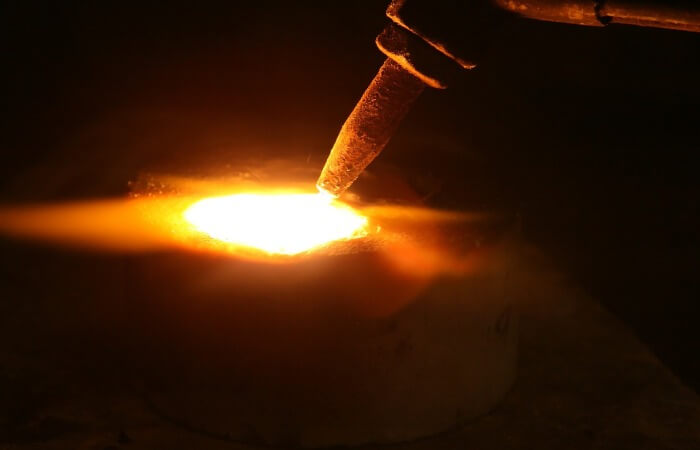V-mill is for superfine grinding

Domestic cone mill for fine and ultrafine grinding.
Cone mill effectively transmit energy from the actuator to a comminuted material, require low energy consumption. Consumed as much energy as necessary for the destruction of a specific particle (or a specific conglomerate of particles). Have a high grinding speed, high performance and minimum wear on the working elements of the grinding chamber. It is possible to grind different materials in one unit and their subsequent mixing.
The device and principle of work
Unlike existing methods ball grinding from the V-way
Description:
Fundamentally new – deterministic transmission method crushing impact of crushed particles, in which energy consumption (excluding load losses) are held only during direct contact of the particles and grinding bodies, and only to the extent necessary for the destruction of the particle.
This effect can be obtained on a flat reference surfaces (V-disc mill) and on the surfaces of bodies of revolution (cylindrical, cone mills)
In the basis of V-process grinding is the crushing of the particles of the initial supply by jamming them between a stationary support surface and having the shape of a body of rotation of the grinding body, which receives the rotation from the movable support surface.
The figure below shows a diagram of forces on a particle during its interaction with the grinding body and the fixed support surface and the transfer amount of crushing force on the grinding body from the actuator through a movable support surface.

Between isolated acts of crushing grinding the body free trial run of moving and nonmoving support surface, consuming idle energy commensurate with the losses of idling of the rolling bearing.
Cone mills are working steadily and equally in zero the working gap, in dosage source nutrition and “under the rubble”, which is especially valuable in a production environment.
By changing design parameters (the diameters of the balls and the grinding chamber, the grinding chamber length, the number of grinding bodies), as well as technological parameters: the number of revolutions of the rotor, the magnitude of the working gap between the bearing surfaces and grinding bodies, size of original power, performance, you can adjust fineness of grind of the finished product in a wide range.
The device and principle of work:
Taper mill is composed of concentrically arranged cones: a rotating rotor and stationary housing, between which one freely covered a number of grinding balls.
In the gap between the rotor and housing (the grinding chamber) is crushed material that is moving under the action of gravity from the top down, are crushed due to the multiple interaction with the grinding media. The finished product is freely poured into the bottom of the device.
Cone mills in this embodiment, due to the taper of the elements of the grinding chamber, one (or both) of which has the possibility of vertical movement, can automatically maintain the consistency of the working gap between the grinding bodies and the bearing surfaces to compensate for wear, and this stabilizes the quality of the finished product.
The fundamental difference between existing methods ball grinding (and not only him) from the V-way:

In the existing methods of grinding (including modern automated mills) external grinding impact grinding is attached to the body, regardless of whether it is in contact with a comminuted particle and its magnitude is constant and does not depend on the strength of the particles. Thus, the cost of energy is constant and does not have feedback with the real demand for it in every single act of chopping of interaction, which leads to excessive power consumption
In the bladed method arranged in a single row grinding bodies are free to move between the fixed and movable bearing surfaces as long as one of them will not get a particle of crushed material. Then only is a grinding body, salinising simultaneously on the particle and on the movable support surface (due to the angle of friction), surging to a particle with no slip passing from the actuator through a movable support surface as much energy as is necessary for its destruction. Coming out of contact with the particle, the grinding body will continue to move freely on the pivot surfaces with minimal loss of idling.
Advantages:
– cone mills effectively transmit energy from the actuator to a comminuted material,
– increase crushing force while reducing the size of the particles
– increase effectiveness of open-circuit grinding with increasing grinding Tonini,
– high speed grinding. In practice, for example, sand particle size from 100 -5 microns. manages to get time in the range from several to tens of seconds,
– cone mills require a minimum of energy consumption. Consumed as much energy as necessary for the destruction of a specific particle (or a specific conglomerate of particles),
– minimal loss of idling. Costs to idle commensurate with the losses of idling in the multi-row ball bearings without cage and their efficiency can exceed 90%,
– minimum wear on the working elements of the grinding chamber,
minimum support cost for the implementation of technological schemes of crushing,
– minimum cost of fabrication, installation and operation,
– widely used to grinded materials, both dry and wet methods with the use of artificial cooling and without it,
– cone mills have a high specific performance,
– the ability to grind various materials into one unit and their subsequent mixing,
– the possibility of the final product is artificial made of granulometric composition, obtained by mixing of the products of grinding in different layers, mills, working in a specially selected operating and design conditions.
Specifications:
Specifications of V-mills are substantially dependent on the physico–mechanical properties of the object of grinding and requirements for fineness of grind of the finished product in connection with which this in a wide range of parameters achievable on a particular apparatus.
Wedge mill cylindrical grinding diameter 100 mm-camera (MCC–100):
Capacity: from 20 to 100 kg/hour.
Fineness of grind R90: from 100 µm to 20 µm.
The maximum temperature in the grinding chamber (without cooling water): not greater than 90 degrees C.
Power of motor: 4 kW.
The diameter of the balls ball download: from 2 mm. to 20 mm.
Dimensions: BxLxH mm, not more: 500х850х1100.
Weight: not more than 230 kg.



